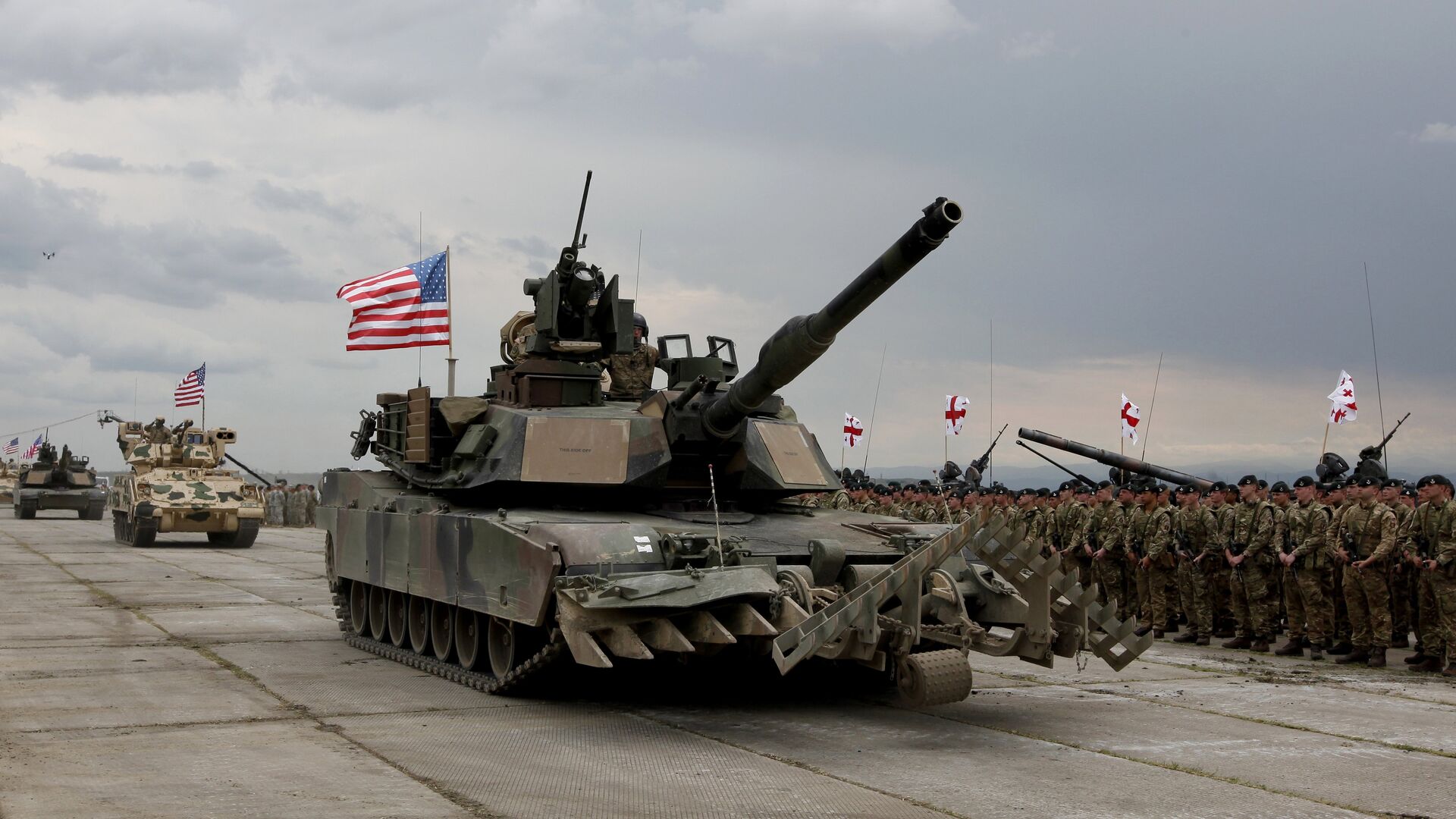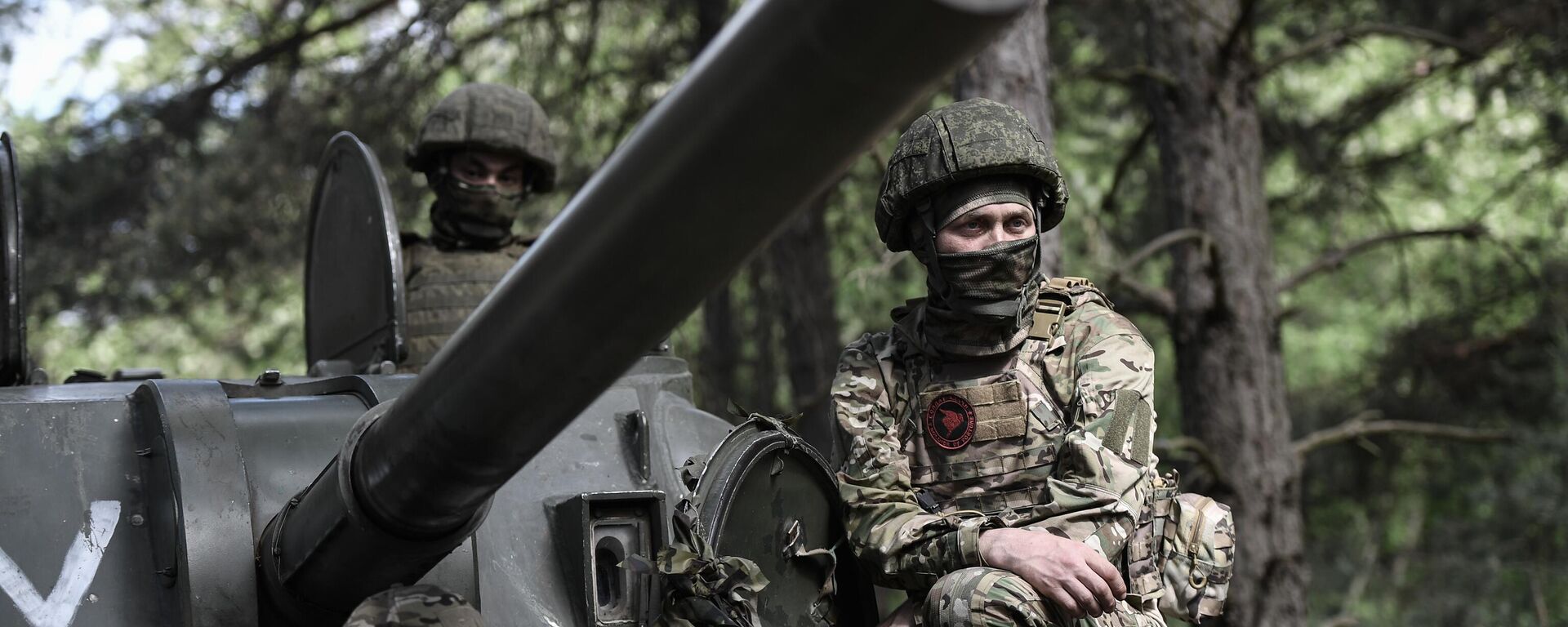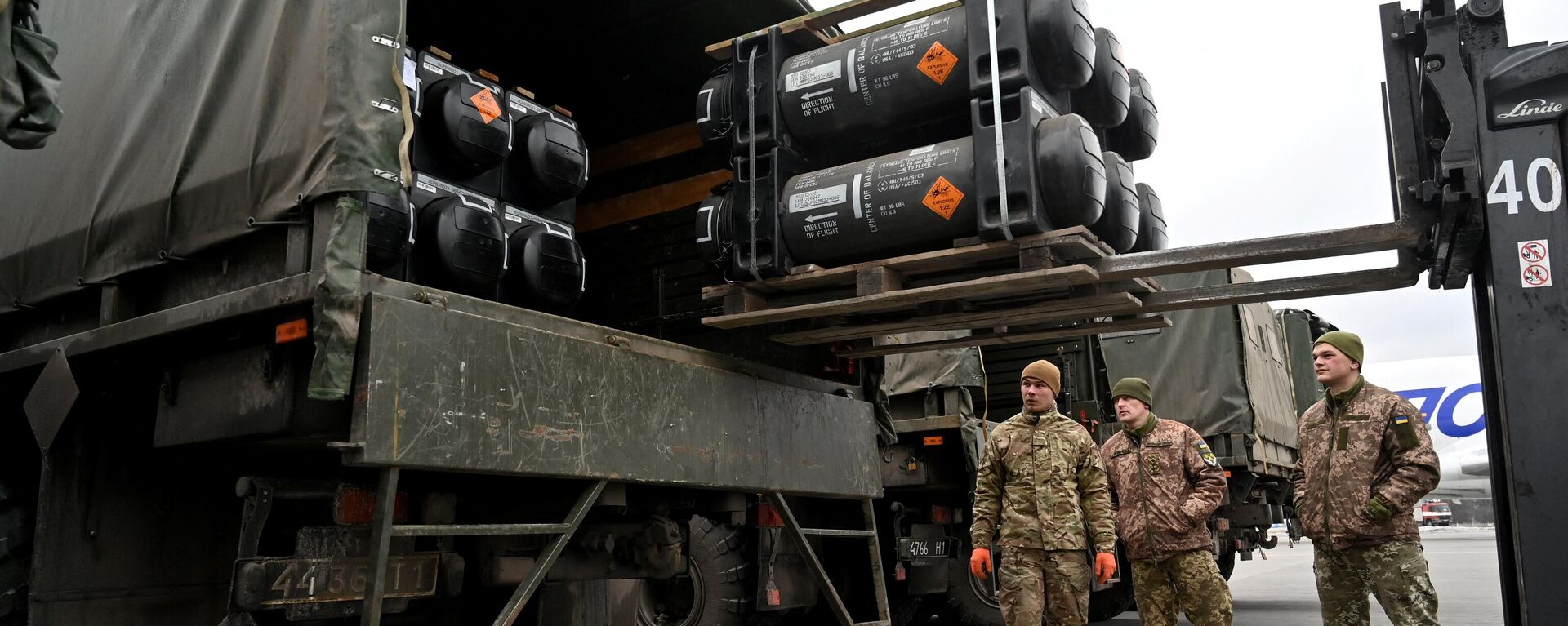Scott Ritter: Ukraine Shows US Military Not Ready for Major War

© AP Photo / Shakh Aivazov
Subscribe
Sputnik brings you the latest insights from Scott Ritter – former US Marine intel officer and UN weapons inspector – where he explains why the US Army is not ready for the full-scale war against Russia based on the failed Ukrainian counteroffensive attempt.
War is hell.
Before the Ukrainian conflict began, the US Army, drawing upon Cold War estimates, assessed in the 2019 edition of Field Manual (FM) 4-0 (Sustainment Operations) that US Army theater medical planners “may anticipate a sustained rate of roughly 3,600 casualties per day, ranging from those killed in action to those wounded in action or suffering disease or other non-battle injuries”, putting the US Army on track to lose some 50,000 casualties in two weeks of sustained combat operations against a Russian-style threat.
Are these numbers realistic? Ask Ukraine. In the lead up to the current counteroffensive, Ukraine built up three brigades-worth of troops (around 20,000 soldiers) along with another nine brigades (some 37,000 troops) trained and equipped by NATO, all of which were slated to participate in the main offensive effort in and around the village of Rabotino, in southern Zaporozhye. These forces were supplemented by an additional 40,000 territorial forces formed into eight so-called “shock brigades” intended to be deployed offensively in the vicinity of the city of Artemovsk (Bakhmut). The total number of Ukrainian troops mobilized and trained specifically for the counteroffensive was just under 100,000 men.
Back in January 2023—five months before the start of the current counteroffensive, and two months before the Battle of Artemovsk (Bakhmut), US General Christopher Cavoli, the commander of US and NATO forces in Europe, told an audience at an Oslo defense forum that the conflict between Russia and Ukraine “out of proportion with all of our [NATO] recent thinking,” adding that “the magnitude of this war is incredible.” Cavoli spoke of artillery expenditure rates by the Russian Army that exceeded, on average, 20,000 rounds per day. Violence begets violence, and with this much high explosive being sent down range, the Ukrainians were certain to be sustaining very high losses.
Russian President Vladimir Putin, speaking to the Eastern Economic Forum, stated that in the three months that have transpired since the Ukrainian counteroffensive was begun, Ukraine had suffered some 71,000 casualties (killed and wounded), or roughly seven out of every 10 men participating. This number is consistent with a statement made by a Ukrainian official responsible for the mobilization of troops in the Poltava Region, which indicated that 80-90 out of every 100 men mobilized become casualties in this conflict. Calculating that roughly 90 days transpired between the start of the Ukrainian counteroffensive and Putin’s comments, this means that Ukraine was losing around 790 casualties per day.
The US Army currently has approximately 100,000 troops deployed to Europe, around 40,000 of which are organized into combat units expected to bear the brunt of the fighting. If these troops were subject to casualty rates approximating those sustained by Ukraine in the prosecution of its counteroffensive, the US Army would exhaust its combat power within 50 days. Of course, this calculation is misleading since it speaks of 100% casualty rates. According to US Army doctrine, if a unit is at 50 to 69 percent strength, it becomes combat ineffective, meaning it is no longer capable of accomplishing its assigned mission. The reality is that US combat forces subjected to the level of violence experienced by Ukraine at the hands of the Russians would become combat ineffective after around 2 weeks of fighting.
An argument can be made that, given the qualitative superiority of the US military over their Ukrainian counterparts, the overall level of lethality being experienced by the Ukrainian military would be mitigated to a large extent, meaning that the US Army should not suffer attrition rates that match those experienced by the Ukrainian forces. This might be true if the conditions on the battlefield were equitable—namely, that the US found itself in a quasi-positional conflict with well-delineated lines of contact with the enemy, and access to fortified defensive positions.
The reality is, however, that any US-Russian conflict will involve what is known as a “meeting engagement”, with two opposing forces engaged in a more fluid battle where the precise make up of forces and the specific terrain features will not be defined until after the lead elements of each force make initial contact. In a meeting engagement, issues of firepower and maneuver dominate, and the side that is able to employ both more efficiently than the other will most likely prevail.
Unfortunately for the US Army, it is Russia that will have the advantage in such an encounter. Maneuver warfare requires the careful choreography of fire and maneuver. Fire is an essential aspect of this—the need to suppress enemy fires and interrupt enemy movement is far more important than inflicting casualties. The US has long relied upon precision fires to offset mass. Precision fires, however, require situational awareness in terms of the enemy’s disposition, something that can only take place via real-time communications.
The methodologies currently employed by the US have been perfected over the course of the past two decades while engaged in low-intensity conflicts where the US forces operated in a permissive environment regarding hostile electronic warfare capabilities. Against a Russian opponent, the seamless communications and the transfer of data that underpins US fire and maneuver schemes will be largely neutralized by Russian electronic warfare capabilities, leaving the US deaf, dumb, and blind when it comes to disposition of Russian forces.
In an environment where speed and alacrity are the cornerstones of victory, the US will find itself lethargic and unresponsive, unable to coordinate effectively on the most rudimentary of tasks. Russia will be able to exploit its significant advantage in artillery firepower to disrupt and destroy the US ability to place effective firepower on the Russian target, and to impede US efforts at maneuvering in reaction to Russian advances. The result will be the total collapse of the US forces involved in the meeting engagement, leading to their retreat and ultimate destruction.
The magnitude of the US defeat will be increased by the difficulties associated with logistically supporting large quantities of US forces in the field. Manuever requires more movement, and movement requires fuel. The US will be confronted with uncertain fuel supplies and vulnerable lines of communication which, once subjected to Russia interdiction, will prevent the sustainment of whatever maneuver efforts the US might be able to undertake. Russia should be able to isolate individual units, threatening them with destruction and prompting their disintegration or surrender.
In such a battle, the US could easily find itself burning through a Brigade’s worth of troops every two days—the very 3,600 casualty figures predicted by the US Army in 2019. At this rate, the US could very well find its entire European force made combat ineffective after only approximately one week of sustained combat. The rapid defeat of US Army forces in Europe would resonate throughout NATO, resulting in a precipitous decline in morale which could result in the total collapse of the forces engaged in combat operations against Russia. Again, General Cavoli’s words resonate—the violence associated with modern large-scale ground combat is “out of proportion” to the thinking taking place in NATO and US planning circles. Simply put, neither the US nor NATO are prepared to engage in large-scale combat operations against a peer-level opponent such as Russia.
War is hell.
But its even more so when you are completely unprepared for its awful reality.






